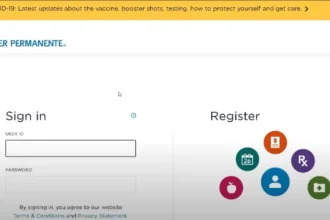Laboratories implement CO2 incubators as special devices to fulfill their requirements. The device creates a protected environment that facilitates growth of cells, tissues and bacteria. Within the incubator environment air stays clean and warm along with remaining humid. The incubator introduces carbon dioxide (CO2) into the atmosphere during its operation. The incubator duplicates the exact environmental conditions which exist in human tissue.
Why is CO2 important?
Cells thrive when they exist at a suitable pH. CO2 helps maintain this balance. The incubator encourages a chemical reaction of water through which CO2 comes into contact with water. This reaction creates carbonic acid. The acidic nature of carbonic acid produces an environment with similar acidity to human biological conditions.
Where is it used?
CO2 incubators serve as standard laboratory equipment that exists in numerous research institutions across the globe.
– Hospitals
– Research centers
– IVF clinics
– Pharmaceutical labs
– University science labs
Research cells and vaccines, and medical drug testing require incubators to propagate their growth.
How does a CO2 Incubator work?
Inside the incubator, both temperature parameters and CO2 concentrations and humidity levels need regulation. Here’s how it works:
– The temperature stays around 37°C.
– The CO2 level is usually 5%.
Internal water trays provide moisture content for maintaining humidity inside the chamber.
The system contains sensors that monitor all factors. Automatic adjustments take place when any of the parameters change.
Key Parts of a CO2 Incubator
The CO2 incubator contains numerous vital components for operation. These include:
1. Temperature Controller
Internal heat remains stable because of this mechanism.
2. CO2 Sensor
Signals from the sensor activate modifications to control gas levels.
3. Humidity Tray
The device maintains enclosed water that works to humidify interior air.
4. HEPA Filter
The HEPA filter operates by trapping both air-dust and airborne microorganisms.
5. Display Panel
Users can find the present configurations displayed on the screen while warning notifications appear when device malfunctions occur.
Instructions for CO2 incubator operation.
- The chamber requires cleaning before any object goes in.
- Setting the proper humidity requires filling the water tray to its maximum capacity.
- Set the desired temperature together with appropriate CO2 values.
- Place your samples inside carefully.
- Check the display frequently after tightly sealing the door.
Features to Look For
– Easy-to-read digital display
– Stable temperature control
– Fast CO2 recovery
– High humidity levels
– Built-in air filter
The device comes equipped with an automatic alarm system that detects gas or power problems. OTS Technik CO2 Incubator has all of these features.
Types of CO2 Incubators
The CO2 incubator market features two principal designs of equipment.
- Direct Heat Incubator
Chamber temperature in this variety is achieved through heated air. It is simple and affordable.
- Water Jacketed Incubator
The heating system of this type consists of warm water that runs through the chamber walls. The incubator maintains constant heat production which continues operating even when electricity fails temporarily.
Safety Tips to Remember
A CO2 incubator presents no safety risks when operated with proper techniques. Acquiring safe operation of CO2 incubators requires you to observe several essential rules.
Effective incubator operation requires regular cleaning to stop the risks of contamination.
Place clean liquid water only within the tray.
– Check the gas supply regularly.
Open the door of the unit as little as possible.
The incubator sensors must receive regular calibration checks.
Common Problems and Solutions
A problem with the incubator rarely results in correct operation. Here are some common issues:
tems are designed to prevent inappropriate temperatures through the inspection of heating units combined with door seals.
– Low humidity: Add water to the tray.
– CO2 too low or high: Inspect the gas cylinder or sensor.
When the display shows an alarm notification, users should follow its guidance or contact a technician for help.
Conclusion
Cells benefit from optimal growth conditions thanks to the operation of a CO2 incubator. The device regulates both heat and moisture and gas levels within its environment. The research and testing operations at labs greatly depend on CO2 incubators for their medical applications. Understanding the method of operation enables users to operate the system with greater effectiveness. To achieve ideal performance, you should both follow safety procedures and maintain the cleanliness of the equipment.

















